How to minimise the build up of surface water
When planning patios and driveways, it’s important to take the drainage of surface water into account to protect your newly paved area and your property, even if you’re not in an area that’s a risk from flooding.

What is surface water?
Surface Water is any water from rainfall that collects at ground level and is unable to drain away. This could be as little or large as:
-
A small as a puddle on your patio or driveway that you have to walk around or avoid parking in
- Submerged sections of turf in your garden that makes it unusable
On impermeable surfaces like roads, pavements, patios and traditionally paved driveways, gradients and surface water drainage products are used to move this water to drains and sewers.
On both unimproved surfaces and improved permeable surfaces, water drains through the surface and is allowed to soak away. In both impermeable and permeable surfaces, it is possible to temporarily store this surface water in underground attenuation tanks before it is slowly discharged into a sewer.

Problems can arise and flooding is possible when:
- There is heavy rainfall or the melting of snow and ice,
- Any time a sewer cannot handle the storm surge or run off from impermeable surfaces,
- When permeable surfaces, like turf, are saturated
- If the water falls onto a hard surface and cannot roll away, or there is no drain to disperse it
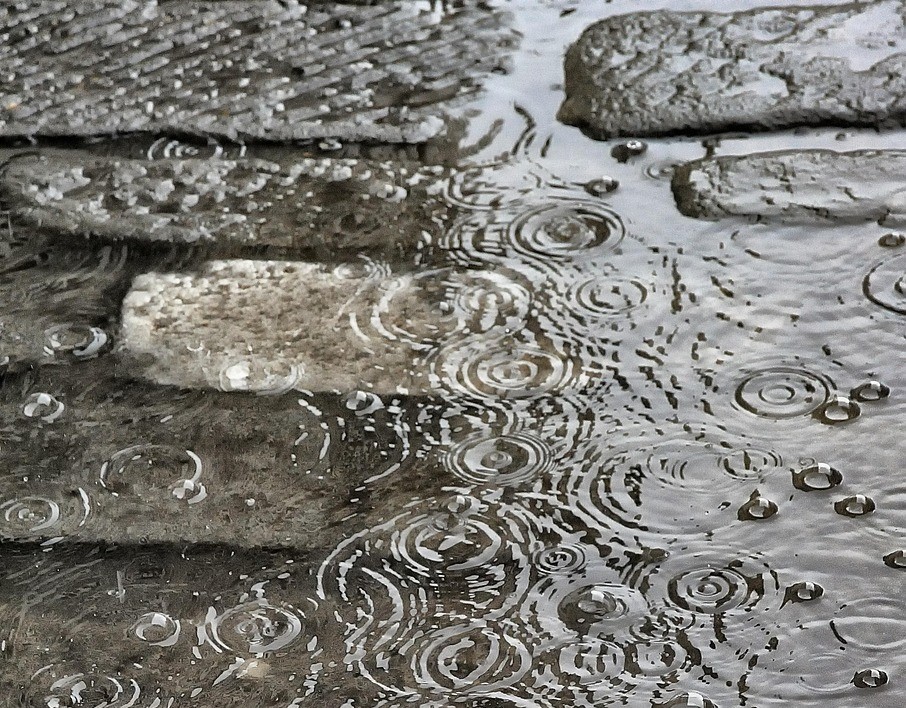
What problems can surface water cause?
If surface water collects on your patio or in your garden, it can cause a number of different problems, including:
- Cause a hazard on paved surfaces
- Encourage the growth of moss and mould, which is a slipping hazard
- Lead to structural problems for paved surfaces, fences, sheds, and outdoor buildings
- Damage to your home if the water is allowed to stand next to the walls of the house for an extended time.
How to avoid surface water problems
The good news is, there are several relatively simple ways to improve drainage in your outdoor space. Here are the top 5 ways to avoid surface water problems according to our Civils expert, Matt Adlington:
2. Collect rainwater
Installing water buts at the bottom of your downpipes will capture the rainwater that flows through them, managing the flow of water off your home. You can then use the collected water to water your plants and garden, which is more economical.
3. Choose your surfaces carefully
Paving driveways, parking spaces and gardens with concrete, asphalt, or traditional block paving can make it incredibly difficult for water to flow away. Opting for permeable block paving or a ground guard filled with aggregates will allow water to drain through.
4. Plan patios and paths
Remember to lay your patio over an aggregate sub-base and consider including areas of gravel, shingle, and planted areas within the patio. Jointing paving slabs with water-permeable compound, like Azpects EasyJoint, is also a great way to ensure surface water is kept at a minimum.
5. Soakaways
Plan your drainage carefully to ensure that rainwater doesn’t flow directly into the sewage system and include a soakaway, so that any water has somewhere to go. Products like soakaway crates can also be used for bigger projects where there is lots of pedestrian or vehicular traffic.
The role of SuDs in 2025
Planning for climate change is today a major driver for the building and landscaping industry. SuDS (Sustainable Drainage Systems) refers to a set of water management practices designed to reduce surface water flooding, improve water quality, and promote natural drainage processes. It is particularly important for garden and driveway projects because impermeable surfaces like concrete and tarmac can cause excessive rainwater runoff, overwhelming drainage systems and contributing to flooding.
Many local authorities require SuDS-compliant solutions for new driveways or landscaping projects to prevent excessive runoff, which can contribute to flooding.
Aside from choosing permeable materials, installing soakaways and collecting rainwater, good drainage planning is also key to prevent excess runoff of water.
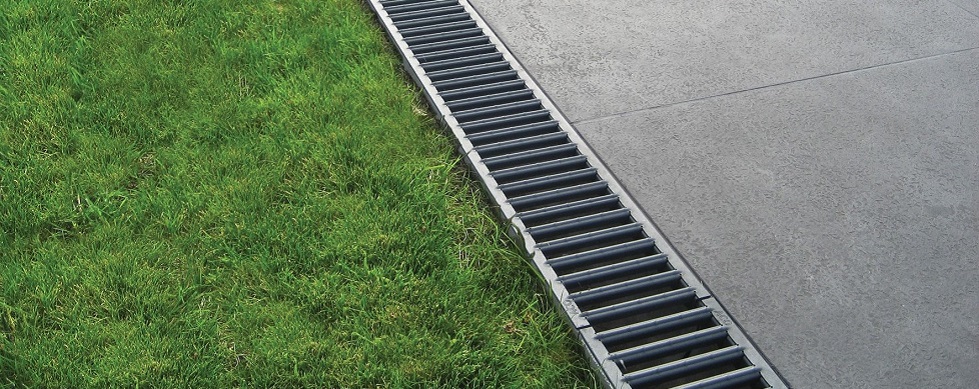
Choosing surface water drainage
Surface water drainage has come a long way from cold, commercial-looking grates so you no longer need to compromise on style. Incorporating clever drainage into your design can work to enhance your driveway or garden project with a wide range of colours and finishes available.

Polished Stainless Steel
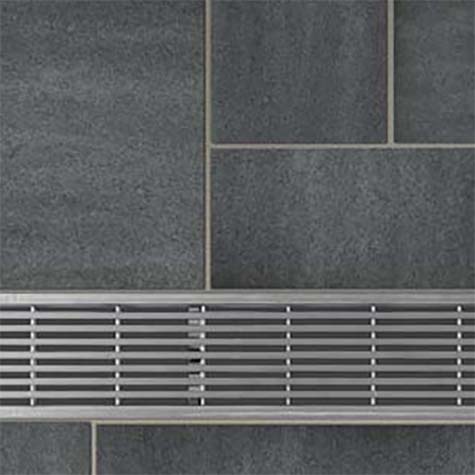
Wedge Wire
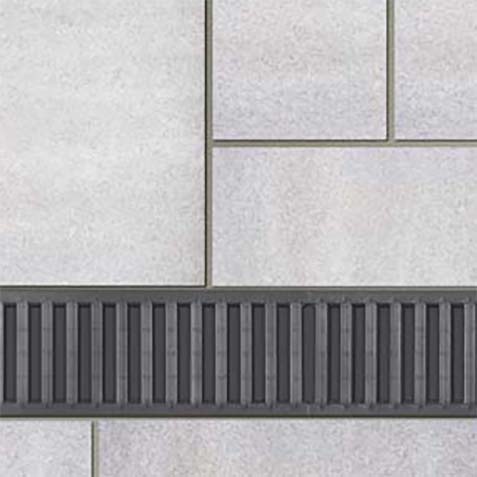
Anthracite
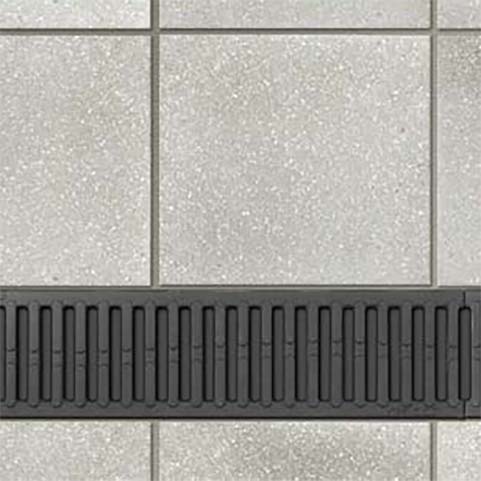
Antique Iron
If you don’t want to create a statement with your drainage choice, there are a number of discreet options available. ACO HexDrain and RainDrain Brickslots are barely visible when used in front of garage thresholds and front doors.
ACO Drain Mats and Threshold Drains are also very discreet and will prevent water pooling at the entrance to your home.

Drain Mats
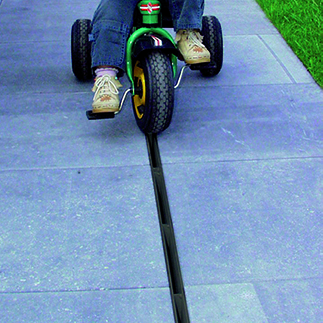
Brick Slots
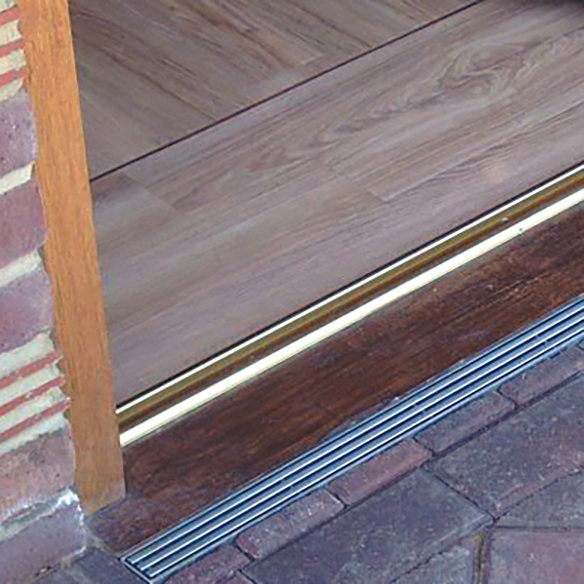
Threshold Drain
“You’ll need to consider where you’re using your drainage and how suitable it is. For gardens and areas where it’s just foot traffic to consider, most drainage will be suitable. For driveways or any area where cars will likely drive over it you need to check the load rating.
A15 load ratings are suitable for pedestrians, cycleways and minimally trafficked areas whereas B125 load ratings are more suited to pedestrian precincts, light vehicles and driveways.”
Matt Adlington, Civils & Drainage Commercial Manager at Elliotts

| Class (EN 1433) | Typical Uses |
|---|---|
| A 15 | Pedestrian, cycleways, minimally trafficked areas (light domestic vehicles only). |
| B 125 | Pedestrian precincts, light vehicles, private car parks and drives. |
| C 250 | Parking areas, service stations (cars) and slow-moving light commercial vehicles. |
| D 400 | Public Highways, parking areas for all types of vehicles. |
| E 600 | Industrial areas, heavy wheel loads, slow-moving HGV’s and forklifts, service stations. |
| F 900 | Airport runways, very heavy industrial and military installations, service yards and lorry parks. |
Need some help visualising the right drainage for your project?
ACO's free visualisation tool will allow you try see different styles of drainage against your driveway or patio.

If you’re unsure which drainage product is right for your project, Matt and our team of Civils experts are on hand to help!
Featured products
ACO HexDrain Brickslot Drain Channel A15 Loading, 1m

Aco Threshold Silver Aluminium Grating Drain, 1m x 61mm

ACO RainDrain Channel B 125 Cast Iron Grate, 1m




